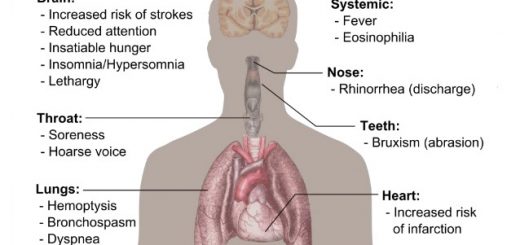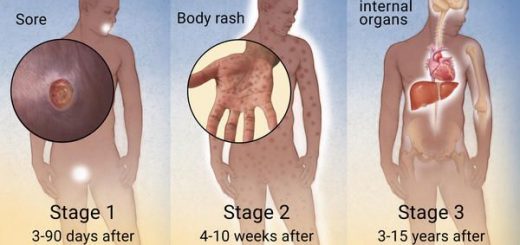Lymphatic system structure, Function of Thymus, Vascular supply and blood-thymus barrier
Myasthenia gravis is a serious and sometimes fatal disease in which skeletal muscles are weak and tire easily. It occurs in 25 to 125 of every 1 million people worldwide. It is caused by the formation of antibodies to muscle acetylcholine receptors. The thymus may play a role in the pathogenesis of the disease by supplying helper T cells that cross-react with acetylcholine receptors. In most patients, the thymus is hyperplastic. Thymectomy induces remission in 35% of patients.
Lymphatic system
The lymphatic system is closely related to the immune system. It consists of:
- Lymph: a protein-rich fluid collected from the intercellular spaces.
- Lymph vessels: irregular channels that carry the lymph.
- Lymphoid organs: they can be classified into primary (central) lymphoid organs and secondary (peripheral) lymphoid tissues
Primary (central) lymphoid organs are responsible for the development and maturation of lymphocytes. They are the thymus and bone marrow. Secondary (peripheral) lymphoid tissues provide the proper environment in which lymphoid cells can react with each other and with antigens to elicit an immunological response against the different antigens. They include lymph nodes, Spleen, Lymphoid nodules in the tonsils, Peyer’s patches in the ileum and appendix.
The thymus
The thymus is located in the superior mediastinum behind the sternum. It is active in childhood but it progressively atrophies from puberty to old age where most of the lymphoid tissue is replaced by adipose tissue.
Histological structure of the thymus
- Stroma: the thymus is surrounded by a connective tissue capsule from which connective tissue septa (trabeculae) extend into the parenchyma and divide it into incomplete lobules.
- Parenchyma: each lobule has a peripheral dark cortex and an inner pale medulla.
Cortex of thymic lobule
The cortex is darkly stained because of densely-packed cells. The cortex is composed of:
- An extensive population of thymocytes (developing T lymphocytes).
- Dispersed epithelial reticular cells. They provide a supporting framework (cytoreticulum) for the developing T lymphocytes.
- Macrophages.
Medulla of thymic lobule
The medulla is pale because of its loosely-packed cells. The medulla of adjacent lobules is connected together due to the incomplete lobulation of the gland. The medulla contains a small number of mature small lymphocytes, few macrophages, a large number of loosely- arranged epithelial reticular cells. They form the cytoreticulum of the medulla and Hassall’s corpuscles.
Hassall’s corpuscles are whorls of eosinophilic concentrically-arranged flattened epithelial reticular cells. In the central portion of the corpuscle, the epithelial reticular cells are filled with keratohyaline granules and cytokeratin filaments and they may calcify. Their function is still not fully understand. Lymphoid nodules, B lymphocytes, and plasma cells are lacking in the thymus.
Vascular supply and blood-thymus barrier
The only blood vessels supplying the cortex are looped capillaries that extend from the arterioles at the cortico-medullary junction. The blood-thymus barrier consists of:
- Continuous (non-fenestrated) endothelial cells of the blood capillaries joined together by occluding junctions.
- The basal lamina of the endothelial cells.
- The pericytes surrounding the capillary wall.
- Macrophages in the perivascular connective tissue.
- The basal lamina of the epithelial reticular cells.
- Epithelial reticular cells joined together by occluding junctions.
The function of the blood-thymus barrier prevents circulating foreign antigens from reaching the thymic cortex where T lymphocytes are still in the state of education and proliferation. The lymphocytes that reach maturity in the cortex then enter the circulation through the post-capillary venules present at the cortico-medullary junction.
Mature T cells then migrate, home, and become activated in thymus-dependent areas of secondary lymphoid organs. The epithelial reticular cells of the thymus produce several growth factors that stimulate T cell proliferation and differentiation e.g. thymopoietin.
Functions of Lymphatic system, Structure of Lymph nodes, Spleen & Tonsils
Immune system structure, function, cells & Types of body defense mechanisms
White Blood cells structure, function, types and How they are formed in the body
Function of white blood cells (WBCs), Agranular leukocytes, Granulopoiesis & Lymphopoiesis
Red blood cells (Erythrocytes) structure & function, Myeloid tissue & Bone marrow



